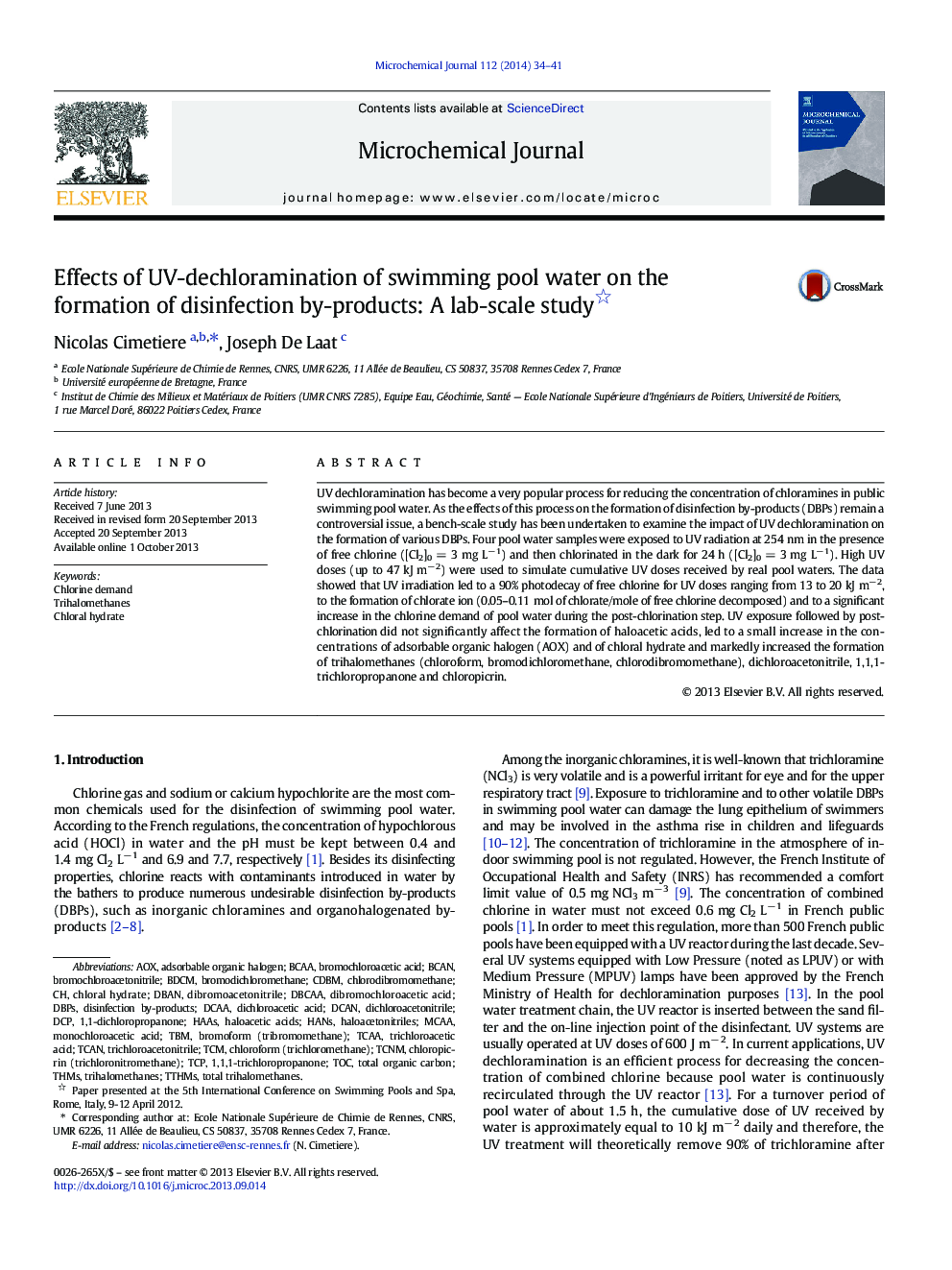| کد مقاله | کد نشریه | سال انتشار | مقاله انگلیسی | نسخه تمام متن |
|---|---|---|---|---|
| 7643299 | 1494882 | 2014 | 8 صفحه PDF | دانلود رایگان |
عنوان انگلیسی مقاله ISI
Effects of UV-dechloramination of swimming pool water on the formation of disinfection by-products: A lab-scale study
دانلود مقاله + سفارش ترجمه
دانلود مقاله ISI انگلیسی
رایگان برای ایرانیان
کلمات کلیدی
BDCMTCNMTCANBromochloroacetic acidTCAAMCAAHAAsDCPTBMDCAAdichloroacetonitrileDCANDBPsHaloacetonitrilesAOXTCMdibromoacetonitrileBCANbromochloroacetonitrileDBANdichloroacetic acid - اسید dichloroaceticmonochloroacetic acid - اسید monochloroacetictrichloroacetic acid - اسید ترشکلراکتیکHaloacetic acids - اسیدهای هالوسیتیکBromodichloromethane - برومودیکلورمتانBCAA - بی سی ای ایTrichloroacetonitrile - تریکلرو آتاونیتیرولDisinfection by-products - ضدعفونی کننده های جانبیAdsorbable organic halogen - هالوژن آلی جذب پذیرHans - هانسChloral hydrate - هیدرات کلرال
موضوعات مرتبط
مهندسی و علوم پایه
شیمی
شیمی آنالیزی یا شیمی تجزیه
پیش نمایش صفحه اول مقاله

چکیده انگلیسی
UV dechloramination has become a very popular process for reducing the concentration of chloramines in public swimming pool water. As the effects of this process on the formation of disinfection by-products (DBPs) remain a controversial issue, a bench-scale study has been undertaken to examine the impact of UV dechloramination on the formation of various DBPs. Four pool water samples were exposed to UV radiation at 254 nm in the presence of free chlorine ([Cl2]0 = 3 mg Lâ 1) and then chlorinated in the dark for 24 h ([Cl2]0 = 3 mg Lâ 1). High UV doses (up to 47 kJ mâ 2) were used to simulate cumulative UV doses received by real pool waters. The data showed that UV irradiation led to a 90% photodecay of free chlorine for UV doses ranging from 13 to 20 kJ mâ 2, to the formation of chlorate ion (0.05-0.11 mol of chlorate/mole of free chlorine decomposed) and to a significant increase in the chlorine demand of pool water during the post-chlorination step. UV exposure followed by post-chlorination did not significantly affect the formation of haloacetic acids, led to a small increase in the concentrations of adsorbable organic halogen (AOX) and of chloral hydrate and markedly increased the formation of trihalomethanes (chloroform, bromodichloromethane, chlorodibromomethane), dichloroacetonitrile, 1,1,1-trichloropropanone and chloropicrin.
ناشر
Database: Elsevier - ScienceDirect (ساینس دایرکت)
Journal: Microchemical Journal - Volume 112, January 2014, Pages 34-41
Journal: Microchemical Journal - Volume 112, January 2014, Pages 34-41
نویسندگان
Nicolas Cimetiere, Joseph De Laat,